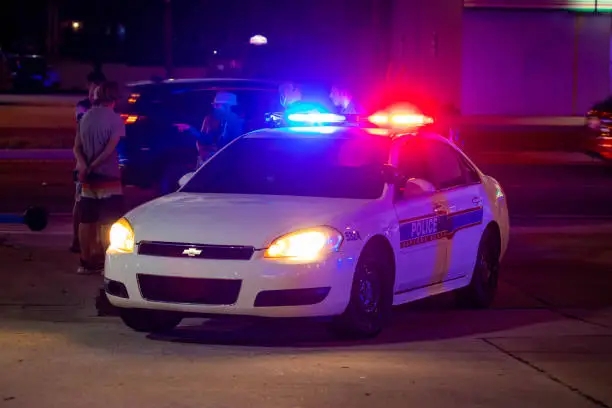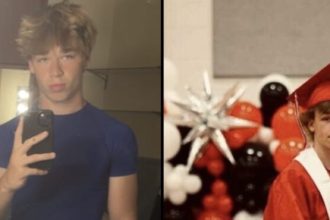Nine Years Later: Survivors and Families Step Inside Pulse Before It’s Demolished for Permanent Memorial
Survivors and Family Members of the 49 Victims were granted an emotional opportunity in mid‑June 2025 to walk once more through the halls of the shuttered Pulse nightclub in Orlando, Florida—nearly a decade after the deadliest mass shooting in modern U.S. history unfolded there. Their journey back inside marked a poignant prelude to the building’s demolition and replacement with a $12 million permanent memorial, set to open in 2027.
A Solemn Return After Nine Years
In a carefully orchestrated process that took place over four days starting June 11, 2025, survivors and loved ones of those killed during the June 12, 2016 massacre visited the venue in small, guided groups. Each group—and there were around 250 participants, including roughly 70 survivors and 120 family members—was allotted a 30-minute walkthrough, during which they were met by emotional recollection and quiet reflection.
Guests entered via a white tent and were transported by bus from downtown Orlando, ensuring both privacy and an organized flow. Inside, the walls and floors stood bare beneath stark lighting, stripped of furniture and decor, with bullet holes and escape routes still visible—silent reminders of that horrific night.
Sounding the Memories of That June Night
On what began as a vibrant LGBT Latin Night celebration, tragedy struck in the early hours. At approximately 2:02 a.m. EDT on June 12, 2016, gunman Omar Mateen entered the club and killed 49 people, wounding 53 others, before also being killed by police after a three‑hour standoff. Those harrowing statistics echoed through the space as family members and survivors stood in the same spot where loved ones were lost or injured—a visceral reminder of the night’s gruesome reality.
Among those inside was Christine Leinonen, who came to honor her son, Christopher “Drew” Leinonen. “My son died on that dance floor. He was shot nine times, and he bled to death on that dance floor,” she tearfully recalled afterward. She described the walk-through as a deeply pragmatic act: “I needed to see how big it was… I would have regretted it if I didn’t go through it.”
Healing and Reopening Wounds
For many, this was the first time since that night that their feet crossed the threshold of Pulse. Brandon Wolf, a survivor who hid in a bathroom during the massacre, chose not to return. “The site of the tragedy is where I feel closest to the people who were stolen from me,” he said. “It will be really hard to be in that space again.”
Mental health counselors were present throughout the visits, offering support to those experiencing emotional distress. Some visitors left early, overwhelmed by the pain of reliving their experiences.
Authorities Provide Answers
During the walkthroughs, guests had the unique opportunity to ask FBI agents involved in the 2016 investigation questions about the events, although some families expressed wish for greater transparency, citing unresolved issues about law enforcement and gaps in the official narrative.
Laying Groundwork For A Memorial
The city of Orlando purchased the Pulse property in 2023 for $2 million after initial plans for a privately funded museum and memorial by the onePULSE Foundation collapsed amid criticism and funding shortfalls. The ambitious original memorial design, aimed at costing $45–100 million, was scaled back. Instead, city planners unveiled a more modest yet meaningful tribute, featuring reflective gardens, a water feature, and 268 illuminated columns representing survivors lining the approach to the sanctuary.
The new $12 million memorial is scheduled to open quietly in 2027 and will stand in place of the razed building. A remembrance ceremony marking the ninth anniversary on June 12, 2025, featured tolling 49 bells and reading of each victim’s name, with family members, survivors, first responders, and community leaders in attendance.
Community Leadership and Support
Mayor Buddy Dyer and Orange County Mayor Jerry Demings attended the walkthroughs, expressing empathy and solidarity, while acknowledging years of challenges ahead. “None of us thought it would take nine years to get to this point… but what we can do is control how we move forward together,” Mayor Demings remarked. Dyer added that stepping back into the space was a powerful reminder of how deeply this tragedy affected the entire city.
Lingering Questions and Complex Healing
Despite the emotional importance of the walkthroughs, some attendees spoke of lingering distrust and unanswered questions. Maritza Gomez, a Pulse survivor, recalled her inner struggle: “I lived that night, but it’s a constant sacrifice to keep moving every day,” reminding listeners that memory does not fade easily and healing is never linear.
The collapse of early memorial plans, including failed provisions for a gift shop and museum, further stirred feelings of neglect. “The building may come down… but that doesn’t change the fact that this community has been scarred for life,” Brandon Wolf warned.
Broader Context and Significance
Pulse was not only a nightclub—it was a vibrant community center open since 2004, championing LGBT voices, supporting HIV awareness, and amplifying immigrant rights. At its core, it represented inclusivity and resistance against hate. That unbroken spirit lives on in the new memorial design, which focuses on light, reflection, and unity.
September 2016 federal designation of the property as a national memorial cemented its legacy. The shift from a large museum vision to a reflective, respectful memorial underscores a collective intention to honor rather than commercialize the site.
Memorial Design: From Vision to Reality
A finalist memorial design by Diller Scofidio + Renfro, with its columns, reflective pools, and protected sanctuary, will grace the site. The structure features a beaded interior canopy and a serene garden, transforming tragedy into a place of healing. This architectural vision focuses on inclusivity and poignancy without overshadowing the space’s emotional weight.
What’s Next
Before demolition begins later this year:
- The structure will be carefully documented.
- A permanent memorial plaza and access paths will be designed.
- Finalization of the memorial design and fundraising efforts will ramp up.
- Once cleared, work begins on the sanctuary and landscaped courtyard leading to it.
City leaders and community stakeholders—including victim families—will closely monitor progress to ensure integrity, transparency, and emotional resonance.
A Community United in Remembrance and Resilience
The Pulse revisit marked a significant moment of collective grief, remembrance, and hope. Community leaders, activists, and visitors from around the world paused at the gates, laying flowers, crossing wrists painted rainbow-colored, and offering quiet thanks.
The nine-year milestone is a somber reminder of both the lingering trauma of violence and the collective power people possess to shape healing spaces that honor loss with respect and dignity.




